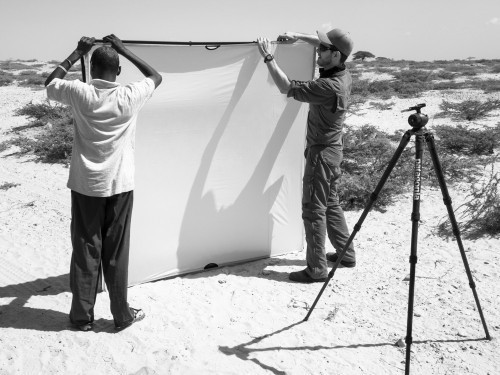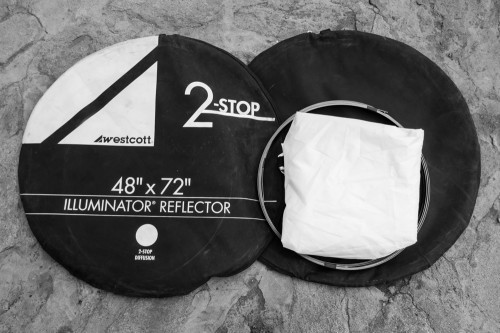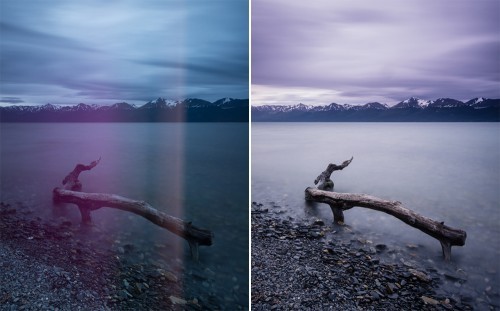David duChemin's Blog, page 40
February 3, 2013
Northern Kenya on White
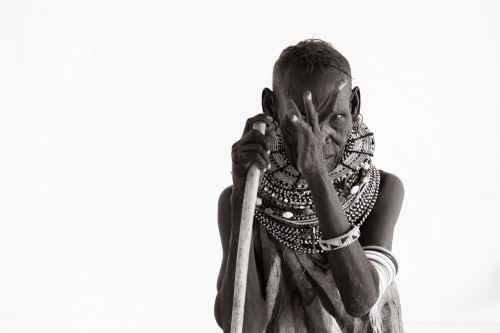
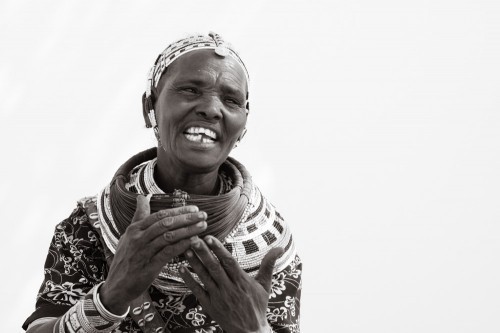
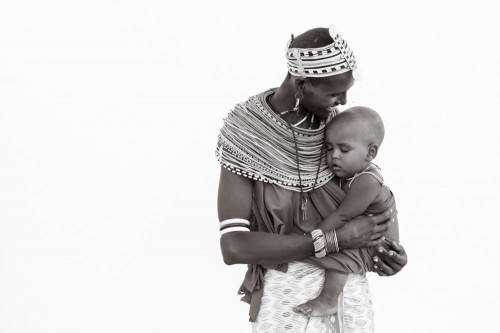
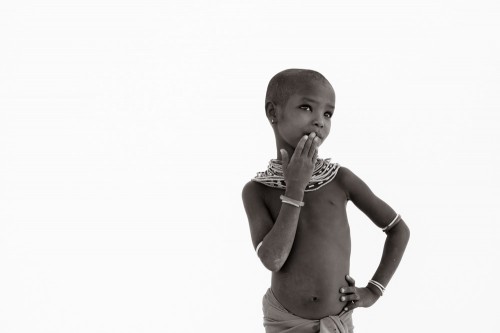 The images above are another sample of the photographs from this last month’s work in northern Kenya. I wanted something simpler than the environmental portraits I’ve done in the past. Something that isolated my subjects from their contexts and showed them, and their emotions and character, elegantly. Before I left I talked to the folks at Westcott, and picked up a 6′ x 6′ ScrimJim with a couple different diffuser panels for it. They also sent 4 more connectors, which I used in conjunction with a hacksaw to make the ScrimJim fit into a duffel bag, which it did nicely. Normally it breaks down into 8 pieces, now it breaks down into 12 smaller pieces.
The images above are another sample of the photographs from this last month’s work in northern Kenya. I wanted something simpler than the environmental portraits I’ve done in the past. Something that isolated my subjects from their contexts and showed them, and their emotions and character, elegantly. Before I left I talked to the folks at Westcott, and picked up a 6′ x 6′ ScrimJim with a couple different diffuser panels for it. They also sent 4 more connectors, which I used in conjunction with a hacksaw to make the ScrimJim fit into a duffel bag, which it did nicely. Normally it breaks down into 8 pieces, now it breaks down into 12 smaller pieces.
The set-up was simple. For the most part we shot under the shade of an Acacia tree, with the ScrimJim held behind my subject by Corwin and almost anyone else we could recruit. It blew around a bit so better to have humans involved than stands that blow over and have to be moved as my subjects, and the light, shifted. Sometimes we were lucky enough to have the shade provided by a simple structure or small building, but it was mostly out in the open. Occasionally we also used the pop-out, oval-shaped Westcott Illuminator Reflectors, mostly the 2-Stop diffuser, held high over the subject or to the side, to further cut the light and open the squinted eyes a little. That too needed modification as the largest of them, the 48″x72″ is pretty large even folded. So we drilled the rivets out, replacing them with nuts and bolts. The spring-steel core was then removed and coiled tight for the flights to Africa, where we took 10 minutes to rebuild them. The last picture below shows how much smaller the coiled steel, and folded panels, are next to the usual size. Way easier to throw into an Extra Large North Face Base Camp duffel. Without these mods, there’s no way we’d get them to Kenya. If I do work like this again, I’ll bring two, maybe three, of the ScrimJims and leave the pop-up reflectors at home. They were harder to work with and a right pain in the arse in high winds. Wish some straps you could connect the ScrimJim frames together into something semi-rigid that would be easier to handle. Thanks to Westcott for all the help with this. They went the extra mile for us, and the gear was perfect.
February 1, 2013
Postcards from Nanyuki
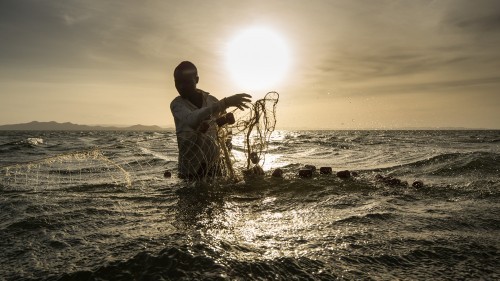 After 2 weeks in the field in northern Kenya, we’ve settled in for 2 days at the Mt. Kenya Safari Club to shower up, debrief, and get ready to head home. We’ve been in Kenya’s north, from Archer’s Post to Loiyangalani, photographing in partnership with The Boma Project, among Rendille, Samburu, and Turkana tribes, mostly nomadic pastoralists.
After 2 weeks in the field in northern Kenya, we’ve settled in for 2 days at the Mt. Kenya Safari Club to shower up, debrief, and get ready to head home. We’ve been in Kenya’s north, from Archer’s Post to Loiyangalani, photographing in partnership with The Boma Project, among Rendille, Samburu, and Turkana tribes, mostly nomadic pastoralists.
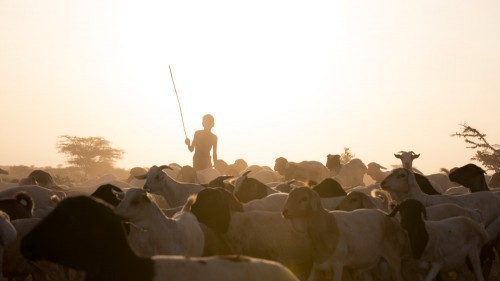
 I’ll do a longer post later as I sort out my thoughts and emotions about the trip, for now I just wanted to drop a line and post a couple images. We’re returning home with a rough edit of 220 images culled from 5000+ frames that are taking up an astonishing 175 GB of hard-drive space on the laptop.
I’ll do a longer post later as I sort out my thoughts and emotions about the trip, for now I just wanted to drop a line and post a couple images. We’re returning home with a rough edit of 220 images culled from 5000+ frames that are taking up an astonishing 175 GB of hard-drive space on the laptop.
Among those images are a series of portraits that I’m really excited to get home and print, and I’ve already got a spot for a small collection of them in the upcoming book, SEVEN. If you saw the last blog post, you saw a few of the initial ones, made with natural light, most of them under the shade of an Acacia tree, and against a Westcott 6’ x 6’ ScrimJim with a diffusion panel. It’s a significant departure from the work I’ve done in the past, but I’m thrilled with them. I’ll be sharing some of them with you in the next few days.
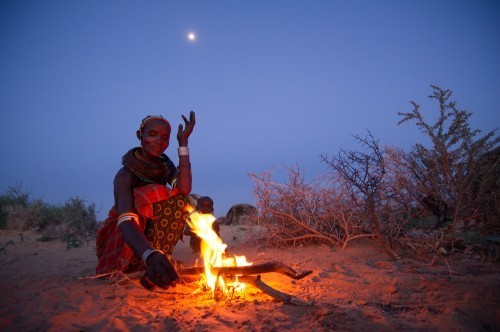
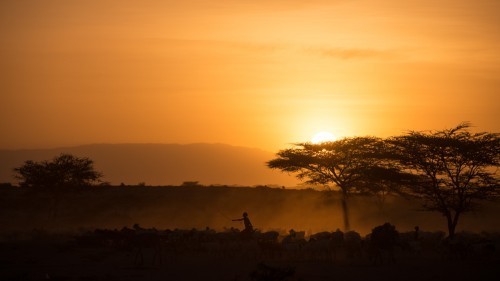
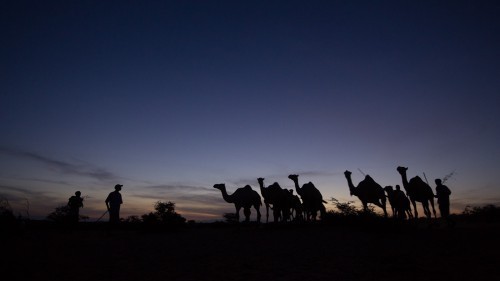 Truthfully, I left for Africa a little under-enthusiastic about picking up my cameras, and nervous about going in a new direction with my portraiture. Perhaps it was the fear talking. Still, my return to this kind of work could not have gone better. The everyday adventure of it, the reunion with friends in familiar villages, the time with a team and a client that I love, and with Corwin who plays producer and assistant when we’re on the field; it was all amazing. And I managed to come out unscathed – no sickness, no falling into a well.
Truthfully, I left for Africa a little under-enthusiastic about picking up my cameras, and nervous about going in a new direction with my portraiture. Perhaps it was the fear talking. Still, my return to this kind of work could not have gone better. The everyday adventure of it, the reunion with friends in familiar villages, the time with a team and a client that I love, and with Corwin who plays producer and assistant when we’re on the field; it was all amazing. And I managed to come out unscathed – no sickness, no falling into a well.
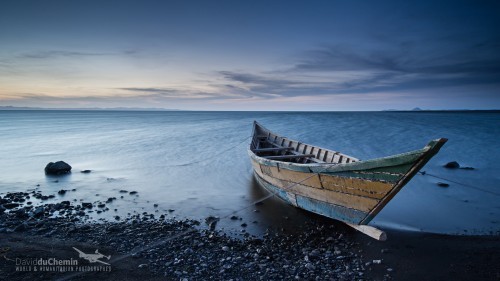 2560 x1440 Desktop wallpaper. Lake Turkana, January 2013.
2560 x1440 Desktop wallpaper. Lake Turkana, January 2013.
I spent time photographing shepherds and herders on the edge of the desert, and fishermen on the shores of Lake Turkana, from which this month’s desktop wallpaper comes. We ate rice and cabbage and goat meat for days, and spent our nights in stick huts with dirt floors, after washing away the dust of the day with a bucket of cold water. We spent hours driving the long distances, laughing a lot and amazed at how much can be said with so little swahili. We spent the last day on the field in Ong’eli, my adopted village, feasting among friends, the elders gathering to give us their prayers and blessings. It was glorious, and I’m going to have a hard time hiding my sorrow when the first person at home asks me how it feels to be back in the “real world.”
January 21, 2013
Postcard from Loglogo
I never feel so much a part of something bigger than myself than when I am here, in this wide open red soil, under this vast African sky. Completely out of my context, but totally in my element. I’ve nothing here but a few personal belongings in my backpack, my cameras, and enough Kiswahili to be politely useless. What I have in abundance is the friendship of the people around me. Whatever else is lacking here, it is not love.
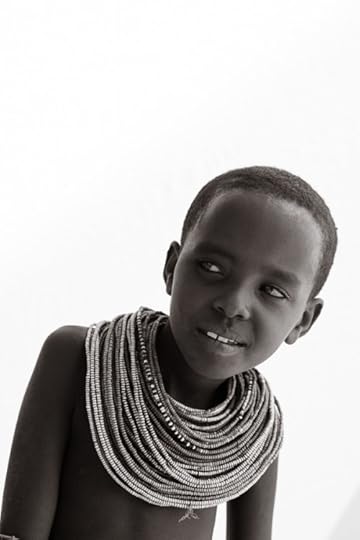
I’m on the last stretch of tarmac heading north, Nairobi now days behind us. The Land Cruiser in front of us carrying Semedgi and Aribo, our friends and security, the barrels of their AKs sticking out of the windows.
I’m going home, to a place I’ve only been once, but to which I return often in my dreams. I’m heading to Ongeli, a small Rendille village of nomadic pastoralists scratching out a living on the edge of the Kaisut desert. A village that two years ago, for reasons beyond my understanding, adopted me, giving me the name Akeno. He who brings good.
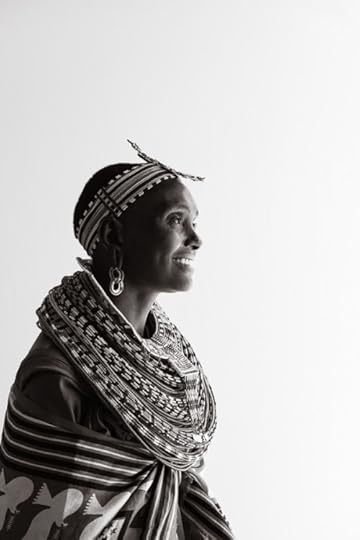
It was Ongeli that heard of my accident in Italy sent prayers up, through the canopy of the acacia tree, mixed with dust, for the healing of a stranger thousands of miles away. They sent the gift of a rungu, a war club, to my hospital bed in Canada. Whatever the intended message I heard them whisper, You’re one of ours, Akeno, keep fighting.
I’m returning to Ongeli. To photograph them again. To bring a camel, to slaughter it and celebrate with them. Perhaps to dance with them under the full moon in a few days. But mostly to say thank you and spend some time with these astonishing people.
January 13, 2013
New eBook: Growing The VisionMonger 2
I’m in Kenya right now but before I left my elves hit the publish button on our latest eBook and they’re rolling it out today. Growing The VisionMonger 2, A Kick-Ass Guide For the Photographic Entrepreneur, is the overdue follow-up to Corwin Hiebert’s first, and equally poetically-titled, Growing The VisionMonger.
Anyone that’s been here long knows that Corwin is my manager and best-friend. So if it looks like I’m shamelessly plugging my best friend’s book, I am. Corwin’s run my business for the last 5 years and I’d be lost without him. I’m good at what I do, but there are things Corwin does much better. He’s an honest-to-God, world-class manager who understand the business stuff on a level I’d need to hire someone to do. Which is what I did. And I chose Corwin. Dude knows his stuff. N’uff said. So when he told me he was scheming a follow-up, I said “do it!”
This is a bit of a niche book, and we know that. Not everyone’s out to make a living, or even moonlight, with their photography. If that’s you, then take the month off, go make some great photographs. We’ll be back in February with the next issue of PHOTOGRAPH. But… for those of you wanting to take your craft to market, this book will be worth much more than the $5 it’ll cost you. Though if you get it in the next few days, it’ll only be $4.
In 68 spreads, Corwin addresses topics from creativity to business skills to networking, marketing, branding, and revenue streams, to name a few. And he’s included 12 Q+As with 12 working photographers to round it out. Growing The VisionMonger 2 lives up to the “Kick-Ass” part of the subtitle because he’s not big on secrets, and generously shares the real dirt on these issues. And he brings an expertise few books like this have, because he’s not a photographer – his business is growing a kick-ass business, and freeing photographers to make kick-ass photographs.
It’s the new year, and time to start thinking about new directions. If part of that is your business, then this is hands-down the best $5 investment you’ll make short of taking a potential client out for coffee, which, by the way, Corwin would give you a high-five for.
Special Offer on PDFs
For the first five days only, use the promotional code MONGER4 when you checkout and pay only $4 OR on CraftandVision.com use the code MONGER20 to get 20% off when you buy 5+ PDF eBooks. These codes expire at 11:59pm (PST) January 18, 2013.
Buy the Bundle
Get both Growing the VisionMonger titles for $8 USD. That’s 20% off. That’s a lot of mongering 
January 8, 2013
Long Exposure Light Leaks
I shot the image above in Patagonia this year, my first real work with the new Nikon D800, which always makes me nervous. So when I saw the weird banding you can see in the frame on the left, I got a little freaked out.
In 25 years of photography, I’d seen some weird things, but never this. I was also shooting with new filters and a new filter holder. So I sat on the beach freezing my fingers while I tried every combination of ND filter, holders, hoods, and polarizers, and finally none of the above. In the end I had the good sense to flip the little eyepiece shutter closed, and the bands went away, apparently a product of light leak. In Antarctica I had the same repeated problem (because I suffer from Terminal Photographic Moronitude and didn’t learn the first time, apparently). I don’t know if this is an issue unique to the D800, but I’ve never had to deal with it.
I know the conventional wisdom is always to cover the eyepiece during long exposures, but pragmatically I’ve never had a reason to do so. Until now. I believe most, if not all, Nikons, have a built in eyepiece shutter with a little switch to the side of the prism. Very handy. All my Canons, I think, came with a weird rubber piece attached to the strap that would have been helpful had I kept any of those straps or ever faced this problem before. So, just a heads-up. Weird banding or unexplainable specters in your long exposures? Try covering the eyepiece. It’ll save you an hour of screwing around with filters and resisting the urge to toss your camera into a deep scenic lake.
I leave the house in a couple hours and head to Kenya for the month. Be good while I’m gone. Try not to burn the place down.
January 6, 2013
BOMA Project: Back to the field
 On Tuesday I’m heading back to Kenya. I’ll be exploring Tsavo (think The Ghost and The Darkness) and Diani (think beaches) for a week and then on January 17th I’m heading back to work. After what will be a forced hiatus of 20 months, due to my accident, I’m finally returning to client work with humanitarian organizations. I’m thrilled to be hobbling back into the field, but even more so that it’s with the BOMA Project. I was there 2 years ago for a couple weeks photographing the Rendille, Samburu, and Turkana, and my time there changed me in ways no assignment ever has.
On Tuesday I’m heading back to Kenya. I’ll be exploring Tsavo (think The Ghost and The Darkness) and Diani (think beaches) for a week and then on January 17th I’m heading back to work. After what will be a forced hiatus of 20 months, due to my accident, I’m finally returning to client work with humanitarian organizations. I’m thrilled to be hobbling back into the field, but even more so that it’s with the BOMA Project. I was there 2 years ago for a couple weeks photographing the Rendille, Samburu, and Turkana, and my time there changed me in ways no assignment ever has.
The BOMA Project was kind enough to let me show these images in my latest book, The Print and The Process, and you participate in BOMA’s work when you buy a copy of that book, with 10% of all royalties going to their work in these small off-the-map communities. If you want to see more of this work, like the portraits that accompany this article, the only place to see it, and read about my process working on assignments like this, is in The Print and the Process.
Northern Kenya is one of the poorest places I’ve ever traveled, and I’ve traveled a good chunk of the world. I found among these nomads some of the most beautiful, creative, empowered people I’ve ever met, and, after being adopted into one particularly remote Rendille village, I feel I’m returning home. I’ll be bringing a cow and instigating a full-on homecoming BBQ. Can’t wait! We’re bringing a video camera and I’ll do some behind-the-scenes blog posts when I get back, though I’ll promise nothing so good, or poorly shot, as this 2011 You-Tube video of Corwin dancing with our new friends.
Postcards will be few and far between, I’m afraid, and by that I mean, there aren’t likely to be any postcards. Not until towards the end of the month when I’m back into Nairobi. And by then we’ll be close to launching Issue Two of PHOTOGRAPH as well. See you soon!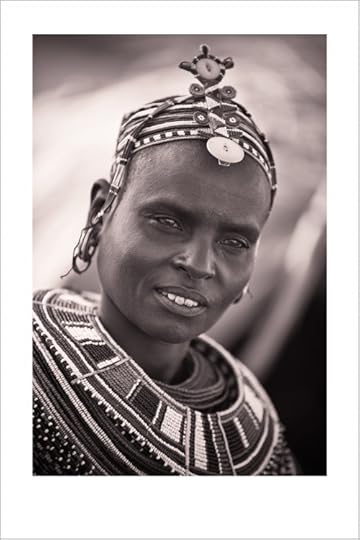
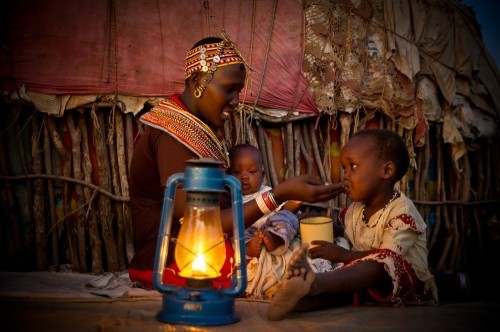
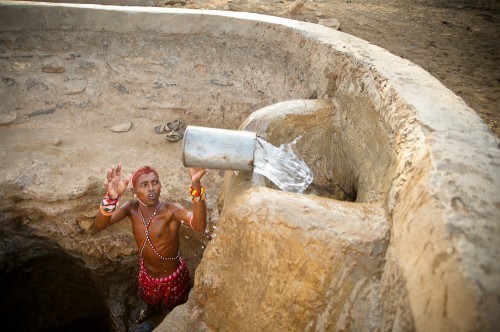
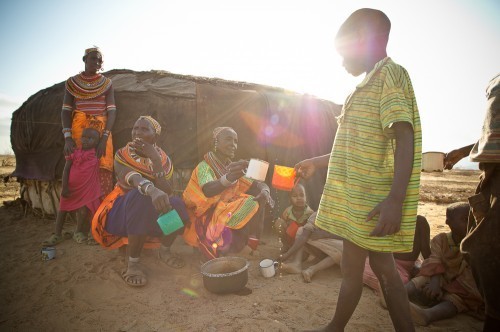
January 4, 2013
Planning Is Just Guessing. But With More Pie Charts and Stuff.
I taught at VanArts this morning, by which I really mean I talked for two hours and hoped those beautiful young minds would learn something from my string of disconnected thoughts. One of the things I talked about, though with my tendency to digress, I have no idea which rabbit-hole I was down when my time ran out, was poetically titled: Planning Is Just Guessing. But With More Flow Charts. It was #8 on the list of sermons I planned to dazzle them with.As far as sermons go, I’ve had shorter titles.
When I made the transition into vocational photography, I’d already had my entrepreneurial feet wet for several years. In some way I’ve always had them. As a 10-year old my mother actually let me go door-to-door for a week before Christmas ( I was 10, she was The Age of Moms), selling the most hideous hand-made Christmas ornaments. Due to my own overwhelming cuteness as a child, I sold a great many of them. Due to the fact that I made these things out of bark, dried plant matter, and googly-eyes, my overhead was low. High gross sales and low overhead meant I saved a good chunk of money for my first computer, though, unable to hang on to my money for that long, I spent it all, as I recall, on little Dungeons and Dragons figurines. Dwarves and dragons and stuff. Wow, was that a digression. So ahem, I made the transition into vocational photography with big plans. Really big plans.
Almost none of them came to pass. Life has a way of happening around us, inflicting itself upon us with very little regard for our own plans, never mind the clever flow charts and critical path diagrams we spend so much time making because it makes us feel like we’re doing something. If we aren’t moving forward, at least we can talk about what it will look like when we finally get traction. Might as well sit around a crystal ball as make all those charts, but it’s harder to get a line of credit for your business when you walk into the bank with one.
Planning is good. Don’t get me wrong. It serves us well when we need a starting point and a string of what ifs. I’m great at planning. Notebooks full of lists and drawings and little check-boxes, and the only thing worse than planning too much is not planning at all. It’s foolish not to do your due-diligence and think things through. Here’s the point it’s taken me 4 paragraphs to get to: you can only plan for one what you’ll do, not for what life will do to you.
Many of us look to the New Year like a blank slate. I think every day is a blank slate, so I have the advantage because when I make a mess of a day I can start over tomorrow. When others make a mess of their day they’ve sullied the entire year and at this point you’ll have to wait 361 days to start over. Given my propensity to muck things up first before turning it around and making something of my efforts, it’s best to keep my fresh starts on the shortest leash possible. Another digression.
If you’re beginning the New Year with great plans of world domination, then I salute you. When I was in physical rehab I had a white board beside my bed on which the nurses insisted I write my daily and weekly goals. I wrote on it once. Under daily goals I wrote: Same thing we do everyday. Try to take over the world. World Domination is a worthy goal. Hard to do it without plans.
Harder still if you hold so tight to those plans that you don’t see better opportunities in the twists and turns of life. No plan survives contact with the enemy, as they say. Not one for having enemies, I’d rather see it as contact with Life itself.
Hold those plans with an open hand, folks. Don’t spend so much time looking down at them that you miss what’s happening around you. Opportunities come from conversations with real people, and reacting to the unexpected things life brings you, not flow charts. They come from leading a busy, interesting life, and reacting well, and quickly, to the things you never saw coming. Life happens, don’t let your clever plans blind you to the things it brings your way.
January 3, 2013
The Life Creative (4)
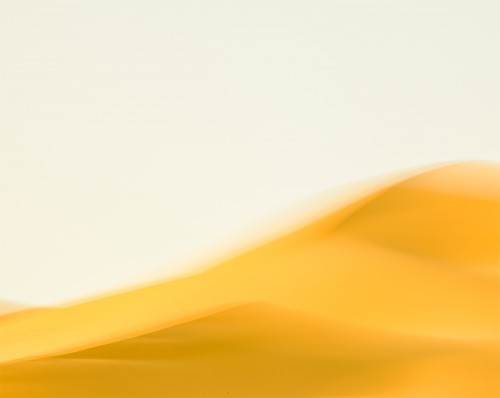 Why am I going on about this Life Creative stuff? Most likely, it’s because in my heart I’m a preacher and I’ve always done very poorly at keeping my mouth shut. But it’s more than that. I have loved photographs since I was a kid and that love’s grown to become a love for those who create them. There’s a great scene in the movie Wonder Boys, where Michael Douglas’ character, an author, says the woman he loves is addicted to words and, luckily for him, he manufactures her drug of choice. I feel the same way. I’ve a vested interest in this art, and the ones who create it, because you all create one of my several (metaphorical) drugs of choice. How can I not hope that this drug is the most interesting, engaging, intoxicating, addictive substance you can create?
Why am I going on about this Life Creative stuff? Most likely, it’s because in my heart I’m a preacher and I’ve always done very poorly at keeping my mouth shut. But it’s more than that. I have loved photographs since I was a kid and that love’s grown to become a love for those who create them. There’s a great scene in the movie Wonder Boys, where Michael Douglas’ character, an author, says the woman he loves is addicted to words and, luckily for him, he manufactures her drug of choice. I feel the same way. I’ve a vested interest in this art, and the ones who create it, because you all create one of my several (metaphorical) drugs of choice. How can I not hope that this drug is the most interesting, engaging, intoxicating, addictive substance you can create?
My latest book, The Print and the Process, is about this very thing on a personal level, and I think it’ll prove to be a transitional book for me. It’s premised on the notion that why we do what we do, and how we do it, are important, because without the how and the why, we don’t have art. But it’s bigger than that. When, a couple years ago I wrote my Life is Short blog post, then set off to sell my possessions and travel the continent in my Land Rover, I caught a glimpse of a new sermon. I’ve talked a lot about vision and expression. Now I want to discuss creation itself. Intentional, unapologetically passionate creation. And if people don’t want to hear the word “passionate” one more time I suggest they go find some before they piss their lives away doing the unimportant, uninspired, or – worse – uninspiring.
It’s been an odd thing to leave a career in comedy for photography, only then to find I enjoy writing words as much as making photographs. I think my photography has benefitted a great deal from the last few years discovering my legs as a writer. What I’ve learned is that my desire to write, or to make photographs, is evidence of a larger desire: simply the longing to create. I love the act of creation. And it’s in that direction I want to move as I start outlining my next written book, something for others who love the creative life and want to live it – regardless of the kinds of things we create – intentionally and, yes, passionately. Right now I’m not sure where it’s going or what it’s going to look like; I rarely do when I begin a project, but the act of beginning is the hardest part. I’m nervous, scared of the effort ahead. Scared, as I’ve been with every book I’ve written, that it’ll fail. But the more I put my ear to the wind and strain to hear my muse, the more excited I become about this because I’ve seen what happens when people begin to openly discuss their creative process and the very real forces, like fear, that stand in our way.
Happy New Year. May 2013 be a year of wonder, creation, and the freedom to follow your muse to new places.
(To read The Life Creative (1) Follow this link…)
(To read The Life Creative (2) Follow this link…)
(To read The Life Creative (3) Follow this link…)
January 2, 2013
Back It Up!
 Here’s your New Year’s reminder: back your stuff up. Do it redundantly, with extreme paranoia, and do it now. If it helps, I’ll even say “Pretty please.”
Here’s your New Year’s reminder: back your stuff up. Do it redundantly, with extreme paranoia, and do it now. If it helps, I’ll even say “Pretty please.”
You put so much time into your work, and harddrives fail all the time. So really, this is not paranoia. It’s wisdom. My preference is that every file, including my Lightroom catalog files, be on three harddrives, one of which is always off-site. So at home I work on an iMac, my files are all on a G-Speed Q RAID drive. Every week, or after any real work session, I run a Super Duper backup of that RAID to one of two G-Tech 4TB drives. I could automate this, I suppose, but I’m really organized, so I’ve never felt the need. The other drive is in a Pelican case at my manager’s office, off-site. He comes over, brings the drive and we swap the week-old one for a new one, always leap-frogging the current drive. This means I’ve always got my files on 3 drives, or at minimum 2, and one of those is always off-site.
There are other solutions out there for off-site back-up. I’ve not tried any of them, though all my personal and business administration files go to DropBox. I’ve heard good things about Backblaze, Amazon Glacier, and Crashplan, all of which are off-site and cloud-based.
The storm, Sandy, that the east-coast of America dealt with recently is a good reminder that the unexpected happens. That’s one of the reasons I keep a drive in a Pelican case. It’s why you should have your stuff off-site and redundant. I know, we’d all rather have a new lens than to have to shell out for drives, but it doesn’t take much to lose it all.
Want more? Check out this video from Chase Jarvis. It’s probably way more than you need, but you’re bound to learn something – if it’s good enough for Chase, it’s worth listening to.
Already backing up your stuff? Well done! Tell us about your strategy and then go calibrate your monitor.  Happy New Year.
Happy New Year.
January 1, 2013
The Life Creative (3)
 Someone just asked me what I do in my spare time. I told them I didn’t have any. I know what they meant, I really do, and I swear I’m not trying to be difficult. You’ll get the same blank look, or blunt reply, from me if you ask me what I do. I just haven’t a clue how to honestly reply in a way that gives you the answer you want and still allows me to fundamentally reject the premise on which the question is based. The best I can do is try not to look like a jerk, and then re-frame the question a little.
Someone just asked me what I do in my spare time. I told them I didn’t have any. I know what they meant, I really do, and I swear I’m not trying to be difficult. You’ll get the same blank look, or blunt reply, from me if you ask me what I do. I just haven’t a clue how to honestly reply in a way that gives you the answer you want and still allows me to fundamentally reject the premise on which the question is based. The best I can do is try not to look like a jerk, and then re-frame the question a little.
So before I get into my sermon about time, let me explain my reaction to the question about what I do; I think they’re related. In fact, they’re related to another question, one I get when I return from traveling. “So, where you there for work or play?” The answer of course, is, yes. And every time I feel like a douchebag for not just playing along. I’m not trying to be pedantic, just faithful to a more meaningful paradigm.
What do I do? What the inquirer means, of course, is “what do you do for work?” But in my case this is no more clarifying, nor any easier to answer. I’m a photographer, an author, a blogger, a publisher, a designer, a traveler, a teacher, a speaker. All of these are true. But underlying the question is a dualism I’m living very hard to reject: the idea that work and play should, necessarily, be separate. Not only separate, but the question implies that our work – separate from our play – defines us.
Should we all do what we love in order to pay the bills? Should living a life and making a living be the same thing? Maybe not for everyone. But I think the longer we persist in thinking that the two worlds are necessarily mutually exclusive, the longer we’ll live without seeing the possibility of their convergence. But that’s not really my point. I am not making a case for “do what you love and you’ll never work a day in your life.” I’m making a case for loving your work, and finding meaning in it. It’s been two years since I did my last humanitarian assignment. I’m going back to Africa, nervously, for three weeks in January: the first time back on assignment with a client since my accident. I’m excited. I love what I do, and at the time, when I’m working long hot hours, I rarely think of it as anything but work. But there’s nothing, in that moment, that I’d rather be doing than creating those photographs with those people, in that place. I don’t see life as a work or play proposition. I see them both combined in something more meaningful: creation.
I’ve got no advice, but if you can’t find meaning in your work, then fight like hell to find it, either there or elsewhere. I am not saying “quit your job and live on love.” I’m saying if your soul is suffocating at the job you’re doing, find another one. If you know you’ll never be happy until you at least try to start the business you want to start, then try it. Life is too short to spend the vast portion of our waking hours doing meaningless work, too short to be trading the too-few hours of our life for a mere wage.
And that’s where I choke on the question of spare time. Is any of us so rich that we can afford to look at time as though we’ve got time left over? Spare time? What is that? Extra time I’m just not using? We talk about time so flippantly. “I’m just killing time,” or “time is money.” Words not a soul among us would waste the time – and it would be a waste – to say on our death beds when time – even minutes or seconds – is all we really long for just a little more of. Kill it? Trade it for money?
My work and play is to create. To write. To photograph. To grow friendships and make new experiences together. And to mold myself, in collaboration with time and circumstance, into the person I hope to be. I read with an appetite, my coffee table and bedside tables littered with books, because the words of others are among the raw materials for whom I am becoming. I read, and watch, great stories, as fuel and hope for my own story. If it doesn’t add to my life and the work of creation in which I spend my days, or to the lives of others, then it’s neither work nor play and I’ve no time for it.
There is no spare time. I plan to use every second of it. Lives are not merely lived; they are created. And it’s that created life from which our love, our art, our legacy flows to others.
(To read The Life Creative (1) Follow this link…)
(To read The Life Creative (2) Follow this link…)


